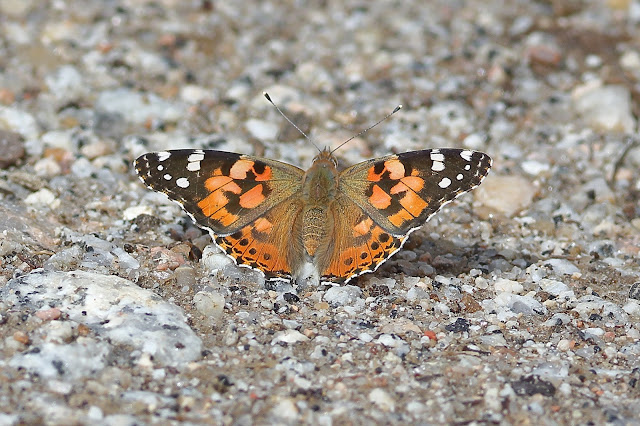Hola una vez más.
Hi again.
Hi again.
En el siguiente enlace podéis ver nuestros próximos viajes fotográficos y de observación de aves y mamíferos nacionales y al extranjero. Espero que os gusten y os animéis a venir conmigo. Una experiencia que nunca olvidareis.
In the following link you can see our next national and foreign Birds and Mammals photographic and observation trips. I hope you like them and I encourage you to come with me. An experience that you will not forget.
En esta entrada os muestro lo que pude fotografiar en el viaje programado el 10 de junio a la Sierra del Rincón, Madrid.
In this post I show you what I was able to photograph on the scheduled trip on June 10 to the Sierra del Ricón, Madrid.
El tiempo no fue muy bueno pero se mantuvo sin llover y con una temperatura muy agradable.
The weather was not very good but it remained without rain and with a very pleasant temperature.
Pudimos ver varios ejemplares macho de alcaudón dorsirrojo (Lanius collurio). No vimos ninguna hembra pues debían estar incubando.
We were able to see several male Red-backed Shrikes. We did not see any females as they must have been incubating.
Vimos varias especies de currucas pero muy fugazmente. En la foto un macho de curruca carrasqueña (Sylvia
cantillans).
We did see several species of Warblers but very fleetingly. In the photo, a male Subalpine
Warbler.
Como no hacía calor, vimos menos mariposas que en otros años. En la foto la doncella punteada (Melitaea cinxia).
Since it was not hot, we saw fewer butterflies than in other years. In the photo Glanville Fritillary.
Nacarada (Argynnis paphia).
Silver-washed Fritillary.
Vanesa de los cardos (Cynthia cardui).
Painted Lady.
Un abrevadero estaba lleno de rana ibérica (Pelophylax perezi).
A trough was full of Iberian Waterfrog.
Tambien andaba por allí esta libélula de vientre plano (Libellula depressa) macho.
This male Broad-bodied Chaser was also there.
Antes de almorzar dimos un paseo por el pueblo de La Hiruela. En la foto una golondrina común (Hirundo
rustica).
Before lunch we took a walk through the village of La Hiruela. In the photo a Barn Swallow.
Avión roquero (Ptyonoprogne
rupestris).
Crag
Martin.
Después de la comida empezamos la excursión de la tarde. Enseguida empezamos a ver algunas mariposas. Esta ortiguera (Aglais urticae) no quiso abrir sus alas para salir más bonita en la foto.
After lunch we start the afternoon walk. Right away we started to see some butterflies.This Small Tortoiseshell did not want to spread its wings to look prettier in the photo.
Blanca del majuelo (Aporia crataegi).
Blackveined White.
Y para finalizar con el tema de las mariposas, esta blanquita de la col (Pieris rapae).
And to finish with the theme of butterflies, this Small White.
En el maravilloso robledal por donde paseábamos, pudimos ver a esta alondra totovía (Lullula
arborea).
In the marvelous oak grove where we were walking, we could spot this Wood Lark.
También pudimos ver bisbita arbóreo (Anthus
trivialis).
We could also spot Tree Pipit.
Este agateador europeo (Certhia brachydactyla) estaba interesado en el nido de trepador azul (Sitta europaea) que se ve en la foto que habían cerrado la entrada con barro para hacerla más pequeña. El agateador está en la parte superior derecha del nido. Es muy difícil de ver debido a su mimetismo.
This Short-toed
Treecreeper was interested in the European
Nuthatch nest that you can see in the photo that had closed the entrance with mud to make it smaller. Treecreeper is in the top right of the nest. It is very difficult to see due to its mimicry.
Vimos muchos ciervos volantes (Lucanus cervus). Esta es una foto que había sacado en otra excursión a este mismo lugar.
We saw many Stag Beetles. This is a photo that I had taken on another excursion to this same place.
Había muchos papamoscas cerrojillo (Ficedula
hypoleuca). En la foto un macho.
There were many Pied Flycatchers. In the photo a male.
Hembra.
Female.
Ya cuando volvíamos de regreso del paseo pude fotografiar a esta alondra totovía (Lullula
arborea).
When we came back from the walk I was able to photograph this Wood Lark.
El sitio es muy bonito, parece que vas paseando por un bosque de la cornisa cantábrica.
The place is very beautiful, it seems that you are walking through a forest on the Cantabrian coast.
La mayoría de los árboles son robles, concretamente de la especie Quercus pyrenayca.
Most of the trees are oaks, specifically of the Quercus pyrenayca species.
Este roble está catalogado y le llaman Rebollo de la Dehesa. En al foto anterior tenéis los datos. Es impresionante.
This oak is cataloged and is called Rebollo de la Dehesa. In the previous photo you have the data. It is awesome.
Si queréis suscribiros a este blog de los viajes que hacemos pincha en el siguiente enlace: Suscribirse y haz clic en ¿ Quieres suscribirte a nuestro blog?
If you want to subscribe to this post about the trips we do, click on the following link: Susbcribe and click on: Do you want to subscribe to our blog?
Espero que os haya gustado y hasta pronto.
I hope you like it and see you soon.





























Preciosas fotos como siempre, pero es que esta excursión tiene un plus de belleza natural que recarga las pilas del observador.
ResponderEliminarQue razón tienes Antón. El lugar y las aves son impresionantes.
EliminarMe alegra que te hayan gustado las fotos.
Un abrazo,
Luis